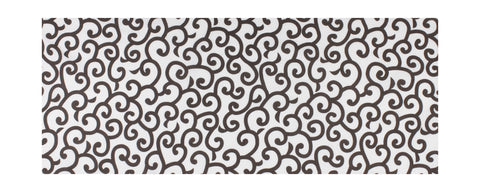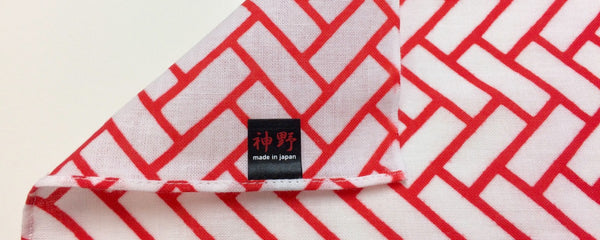"Ajiro" Scarlet【Hand-dyed Tenugui】
¥1,800
Availability: In stock
Brand: kannojapan.com
This japanese towel is dyed using traditional hand dyeing techniques unique to Japan called "Chusen".The back side is the same design.The back side is not white.You can use it without worrying about the front and back.
»About "Chusen"
≪ Design ≫
"Ajiro" (wickerwork) pattern
As named so, the pattern uses a fishing tool as motif that was used instead of a fishing net to catch fish in the river.
The name comes from woven barks of Japanese cedar, Japanese cypress, and bamboo used to catch fish in place of a fishing net.
The pattern features characteristic alternating rectangular shapes oriented diagonally left and right. The uniquely three-dimensional shape is due to the hand-made nature of the motif.
One unique aspect is that the shape can vary greatly depending on the material. The angles in which the materials are woven are more often irregular (not right), making for a unique shape.
The pattern is used not only for kimonos, but also for house ceilings, folding screens, and more traditional items like Noh costumes from the Edo period.
Ajiro (wickerwork) made with Japanese cedar bark is called, "Higaki." The pattern is identical.
≪ Color ≫
Scarlet (Shojohi)
Shojohi refers to a red color with an especially strong tinge of yellow. Since the latter Muromachi era, this color was commonly found in woolen clothes imported from Europe.
Shojo is a mythical creature from China, which resembles a human, but has the body of a dog and the voice of an infant. It is said to understand the language of humans, likes to drink alcohol and is revered as a holy creature.
Its blood is said to be a bright red and hence the color was named after it.
The actual source of the dye is believed to have been species of cochineal insects.
Perhaps out admiration for rare imported goods, in the latter years of the Japanese Civil War Era (16th - 17th centuries), war lords would have their battle surcoats dyed in this color. These are known as Shojohi haori.
| Country of Manufacture | Japan |
|---|---|
| material | 100% cotton 30 count yarn used |
| weight | Approx. 35g |
| washing | When washing use a mild detergent. |

























